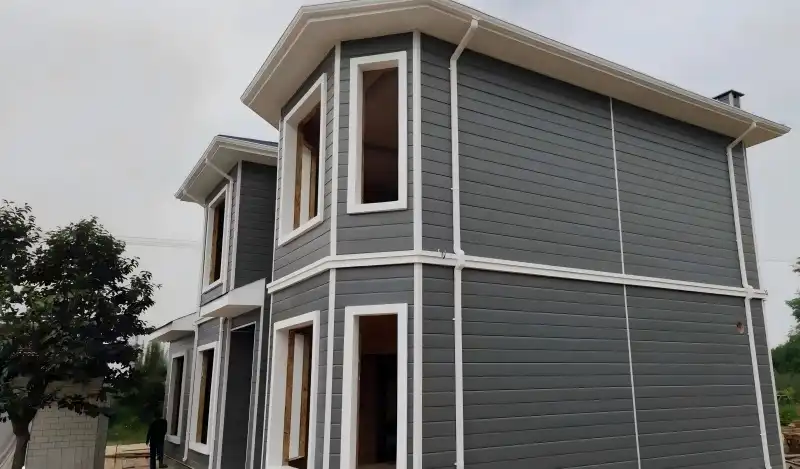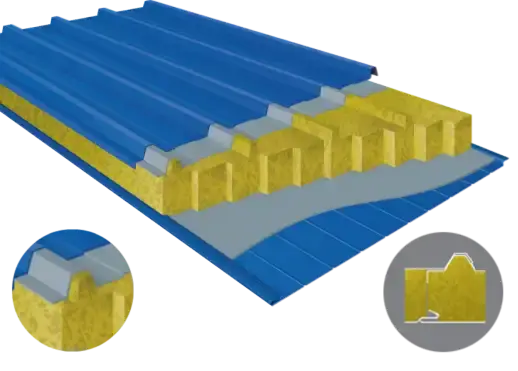Essential Personal Protective Equipment (PPE) for Metal Siding Panel Work
Eye and Face Protection: Safeguarding Your Vision
When working with metal siding panels for shed projects, protecting your eyes and face is paramount. Safety glasses or goggles are indispensable for shielding your eyes from flying metal shards, dust, and debris. Opt for impact-resistant lenses that meet ANSI Z87.1 standards for optimal protection. For tasks involving overhead work or heavy cutting, a full-face shield provides additional coverage, safeguarding your entire face from potential hazards.
Remember that regular prescription glasses are not a substitute for proper safety eyewear. If you wear corrective lenses, invest in prescription safety glasses or wear over-the-glasses (OTG) safety goggles. When selecting eye protection, ensure a snug fit to prevent gaps where debris could enter. Regularly inspect your eyewear for scratches or damage, and replace them as needed to maintain optimal protection while working with metal siding panels for shed construction.
Hand Protection: Choosing the Right Gloves
Your hands are constantly at risk when handling and cutting metal siding panels for shed projects. Selecting the appropriate gloves is crucial for preventing cuts, punctures, and abrasions. Look for gloves specifically designed for metalworking, featuring cut-resistant materials like Kevlar or high-performance polyethylene (HPPE). These materials offer excellent protection against sharp edges and metal splinters without compromising dexterity.
Consider gloves with reinforced palms and fingertips for added durability in high-wear areas. Ensure the gloves fit properly – too loose, and they may catch on machinery; too tight, and they can restrict movement and cause fatigue. For tasks requiring fine motor skills, such as detailed cutting or measuring metal siding panels for shed installation, consider using thinner, more flexible gloves that maintain tactile sensitivity while still offering adequate protection.
Respiratory Protection: Breathing Safely During Metal Work
Working with metal siding panels for shed construction can generate fine metal dust and potentially harmful fumes, especially during cutting and grinding operations. Proper respiratory protection is essential to prevent inhalation of these particles, which can lead to respiratory issues over time. At minimum, use a disposable N95 particulate respirator to filter out metal dust and other airborne particles.
For more intensive work or prolonged exposure, consider a half-face or full-face respirator with appropriate filters for metal fumes and dust. Whether you’re working with materials from a metal siding panels for shed supplier or handling other construction components, always ensure the respirator fits properly and forms a tight seal around your face. If you have facial hair, be aware that it may interfere with the seal, reducing the effectiveness of the respirator. Regular maintenance and filter replacement are crucial for optimal protection. When working with coated metal siding panels for shed projects, be particularly cautious of potential toxic fumes from paint or other finishes, and choose your respiratory protection accordingly.
Proper Workwear and Footwear for Metal Siding Panel Installation
Protective Clothing: Shielding Your Body
When working with metal siding panels for shed construction, your choice of clothing plays a crucial role in protecting your body from potential injuries. Opt for long-sleeved shirts and full-length pants made from durable, cut-resistant materials. Avoid loose-fitting clothes that could get caught in machinery or on sharp edges. Consider wearing a heavy-duty work apron or welding jacket for additional protection against flying sparks and metal shavings.
Choose clothing made from natural fibers like cotton or wool, as these materials are less likely to melt or ignite if exposed to sparks or heat. Synthetic materials can melt and stick to your skin, causing severe burns. If working in hot conditions, look for breathable, moisture-wicking fabrics that help regulate body temperature while still providing adequate protection. Remember to keep your clothing clean and free from metal shavings, as these can cause irritation or even penetrate the skin over time.
Footwear: Protecting Your Feet from Heavy Metal Panels
Proper footwear is essential when handling and installing metal siding panels for shed projects. Steel-toed boots are a must, as they protect your feet from heavy panels that might accidentally fall. Look for boots that meet ASTM F2413-18 standards for impact and compression resistance. The soles should be slip-resistant to prevent accidents on potentially slick surfaces, especially when working with metal shavings or in wet conditions.
Consider boots with metatarsal guards for additional protection to the top of your foot. Ensure your boots fit well and provide adequate ankle support to prevent strains and sprains while maneuvering with heavy metal siding panels. If working in wet conditions or with cutting fluids, choose waterproof boots to keep your feet dry. Regular inspection and maintenance of your work boots are crucial – replace them when the tread wears down or if they show signs of significant wear that could compromise their protective qualities.
Head Protection: Safeguarding Against Overhead Hazards
While not always mandatory for all metal siding panel installations, head protection can be crucial in certain scenarios, especially when working on larger shed projects or in areas with overhead hazards. A hard hat that meets ANSI Z89.1 standards can protect you from falling objects, accidental bumps, and potential electrical hazards if working near power lines.
Choose a hard hat appropriate for your work environment – Type I for top impact protection or Type II for both top and lateral impact protection. Ensure the hard hat fits properly and is adjusted correctly for maximum protection. Regularly inspect your hard hat for cracks, dents, or signs of UV damage, and replace it according to the manufacturer's recommendations or after any significant impact. When working with metal siding panels for shed construction in hot conditions, consider a hard hat with ventilation to help keep you cool and comfortable throughout the workday.
Additional Safety Considerations for Cutting Metal Siding Panels
Hearing Protection: Preserving Your Auditory Health
The process of cutting metal siding panels for shed construction can generate significant noise levels that may damage your hearing over time. Prolonged exposure to high-decibel sounds can lead to permanent hearing loss or tinnitus. To protect your auditory health, always wear appropriate hearing protection when operating cutting tools or working in noisy environments.
Choose between earplugs or earmuffs based on your comfort and the level of noise protection required. Look for hearing protection with an adequate Noise Reduction Rating (NRR) for your specific work environment. For particularly loud operations, consider wearing both earplugs and earmuffs for maximum protection. Remember to properly insert earplugs or adjust earmuffs for a snug fit to ensure optimal noise reduction. Regularly clean and maintain your hearing protection devices, and replace them if they show signs of wear or damage to maintain their effectiveness while working with metal siding panels for shed projects.
Work Area Safety: Creating a Secure Environment
Establishing a safe work area is crucial when cutting and installing metal siding panels for shed construction. Start by ensuring your workspace is well-lit to prevent accidents caused by poor visibility. Adequate ventilation is essential to disperse metal dust and fumes, so work outdoors when possible or use fans and exhaust systems in enclosed spaces. Keep your work area clean and organized, promptly disposing of metal shavings and offcuts to prevent slip and trip hazards.
Set up sturdy work surfaces and secure your metal siding panels properly before cutting to prevent unexpected movement. Use appropriate cutting tools designed for metal work, and ensure they are sharp and well-maintained to reduce the risk of accidents. Establish a designated area for cutting operations, away from flammable materials and foot traffic. Always have a fully stocked first aid kit and fire extinguisher readily accessible in case of emergencies. By creating a secure work environment, you significantly reduce the risk of accidents and injuries while working with metal siding panels for shed projects.
Tool Safety: Proper Use and Maintenance
Using the right tools correctly and maintaining them properly is essential for safe and efficient work with metal siding panels for shed construction. Always use tools designed specifically for metalworking, such as electric shears, nibblers, or circular saws with metal-cutting blades. Read and follow the manufacturer's instructions for each tool, paying special attention to safety guidelines and recommended personal protective equipment.
Keep your tools clean and well-maintained to ensure optimal performance and safety. Regularly inspect cutting blades, power cords, and safety guards for damage or wear, and replace them as needed. Always use tools with proper guards and safety features intact. When not in use, store your tools securely to prevent unauthorized access or accidental damage. Avoid using damaged or modified tools, as they can pose significant safety risks. By prioritizing tool safety and maintenance, you'll not only work more safely but also extend the life of your equipment when working with metal siding panels for shed projects.
Conclusion
Prioritizing safety when working with metal siding panels for shed construction is paramount. From essential PPE like eye protection and cut-resistant gloves to proper workwear and footwear, each element plays a crucial role in safeguarding your well-being. Remember the importance of respiratory and hearing protection, and always maintain a clean, organized work area. By following these guidelines and using well-maintained tools, you significantly reduce the risk of accidents and injuries, ensuring a safer and more efficient project completion.
At Weifang Sandong Building Materials Co., Ltd., we're committed to providing top-quality metal siding panels for shed projects while prioritizing worker safety. Our panels are designed for easy installation and handling, featuring corrosion-resistant coatings and UV protection for long-lasting performance. Whether you're tackling a DIY project or managing a large-scale construction, we have the right solutions for your needs. For more information on our metal siding panels and how they can enhance your shed's durability and aesthetics, don't hesitate to contact us at info@sdqsc.com.
FAQ
How often should I replace my safety gear when working with metal siding panels?
Inspect your safety gear regularly and replace items showing signs of wear or damage. Generally, replace hard hats every 5 years, safety glasses annually, and gloves as needed.
Can I use regular work gloves for handling metal siding panels?
It's recommended to use cut-resistant gloves specifically designed for metalwork to provide adequate protection against sharp edges and metal splinters.
Is a dust mask sufficient for respiratory protection when cutting metal siding panels?
For light work, an N95 mask may suffice. However, for intensive cutting or grinding, a half-face or full-face respirator with appropriate filters is recommended for better protection.
References
1. Occupational Safety and Health Administration. (2021). Personal Protective Equipment.
2. National Institute for Occupational Safety and Health. (2020). Protective Clothing and Ensembles.
3. American National Standards Institute. (2020). ANSI/ISEA Z87.1-2020: American National Standard for Occupational and Educational Personal Eye and Face Protection Devices.
4. Canadian Centre for Occupational Health and Safety. (2021). Hearing Protection.
5. Safety and Health Magazine. (2019). Respiratory Protection: Disposable Respirators vs. Reusable Respirators.
